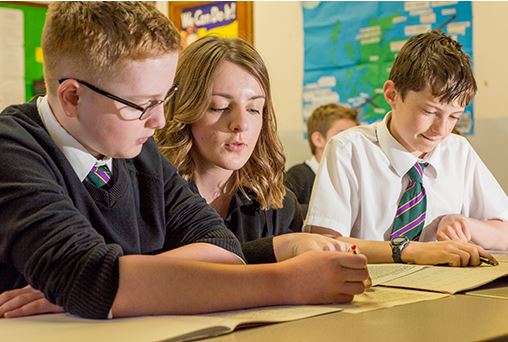10 Tips for Teachers for Working with Struggling Readers and Writers

Over the past 18 months we have seen a surge of enquiries from teachers and schools wanting a program to address the literacy demands of a wide range of readers and writers in the upper primary and secondary years. Compounding the challenge for teachers is the reality that today’s classrooms are filled with students with increasingly diverse needs, stemming from differences in their home languages, learning abilities, literacy experiences, and the undeniable effects of covid interruptions.
All teachers are teachers of literacy. Teachers in both primary and secondary industries know that literacy overarches every subject area. Let’s look at 10 ways how you can help your individual learners who may be experiencing some difficulty in their reading and writing.
1. High levels of student engagement and providing choices
Student engagement is a vital factor in student performance and academic growth. Ask students to sit where they can see, hear and participate. Student engagement can be achieved through instruction that fosters motivation, strategy use, the use of a variety of activities and instructional approaches, and social interaction. Break down long, complex tasks into smaller sections.
There are two powerful instructional elements to improving reading motivation and comprehension:
- Student access to many books
- Personal choice of what to read
Consider a limited, yet meaningful, choice of reading topics. When given choices, students become active participants in their own learning, thus becoming more invested in the reading and related activities (Moore, et al. Adolescent literacy: A position statement for the commission on adolescent literacy of the International Reading Association.)
2. What can your students do? Build on their strengths
Teach them to use what they know and work from there. Have high expectations for student performance; be sure that tasks are within students’ control.
Assign tasks they can accomplish and expect that they will perform. In reading, writing and literacy tasks, present students with work that they can do with your support. That includes reading texts that offer only a few challenges and writing about topics that they possess some knowledge about and understand.
3. Time, organization, and classroom management
Small-group instruction is a critical literacy component for struggling learners and writers. Some small groups comprise students with similar reading abilities, and texts and instruction are matched to the readers so that the level of challenge is sufficient but not overwhelming. The small-group format enables teachers to more easily maintain the focus and attention of students who may otherwise be disengaged, and it makes it easier for them to monitor the students’ reading behaviours.
This is an underutilised strategy, particularly in the secondary domain. Students should have regular opportunities to listen to a fluent adult read aloud. Listening to an adult model fluent reading increases students’ own fluency and comprehension skills, in conjunction with expanding their vocabulary, background knowledge, sense of story, awareness of genre and text structure, and comprehension. Reading their drafts aloud should be actively encouraged as this gives them insights into things such as the use of punctuation (or lack of!), sentence structure, and repetition (have they repeatedly used the same sentence starter? for example)
5. Opportunities to talk with their peers about reading and writing
It’s a nice break from pen and paper! Conversations with their peers does improve comprehension and engagement with texts. Ask your students to analyse, comment, discuss, predict and compare – in short, to think about what they’ve read, rather than merely focus on recalling or retelling what they have read.
information in texts in a more systematic, organized way.
9. Opportunities for writing tasks to be personally relevant
10. Classroom environment
“How do you keep struggling readers and writers feeling part of the class?”
We can only help these students develop a real sense of belonging if we enable them to be active learners, and this means we must ensure that they are given materials and tasks with which they can be successful. Provide extra support to help them practice so that they can participate fully in the classroom and this will bolster their growth as readers and writers.
To help students tackle the writing of whole texts is a monumental task. It is why the teaching of writing is hard! There are many foundation skills ~ spelling, grammar, punctuation, the composition of sentences ~ and these need to be regularly practiced before students tackle the Mt Everest of writing.
Teacher Resources:
Click here for our article Literacy Toolkit 2022: Fresh Ideas to get your students to read
Six Powerful Reasons Why Kids Need to Write
Six Powerful Reasons Why Kids Need to Write
“Me, Write?” Teaching written language to boys
Looking for a program to engage and further improve your learners’ literacy levels?
Literacy for Boys and Literacy for Kids have been adopted in over 50 schools around Australia, NZ, and the Asia Pacific. Contact us for a FREE trial in your school. See for yourself how our engaging programs are boosting literacy levels in the next generation!
Check out our blogs for more ideas and tips.
Super skills of Reading: How to help your child become a better reader
Steps to Successfully Support Disengaged Learners
See us featured in The Educator Australia magazine
Research confirms that early reading boosts literacy
Boys Love LFB – Here’s what they have to say!
Get boys reading in the digital age
Why write? Tips for reluctant writers
Brought to you by Tanya Grambower

